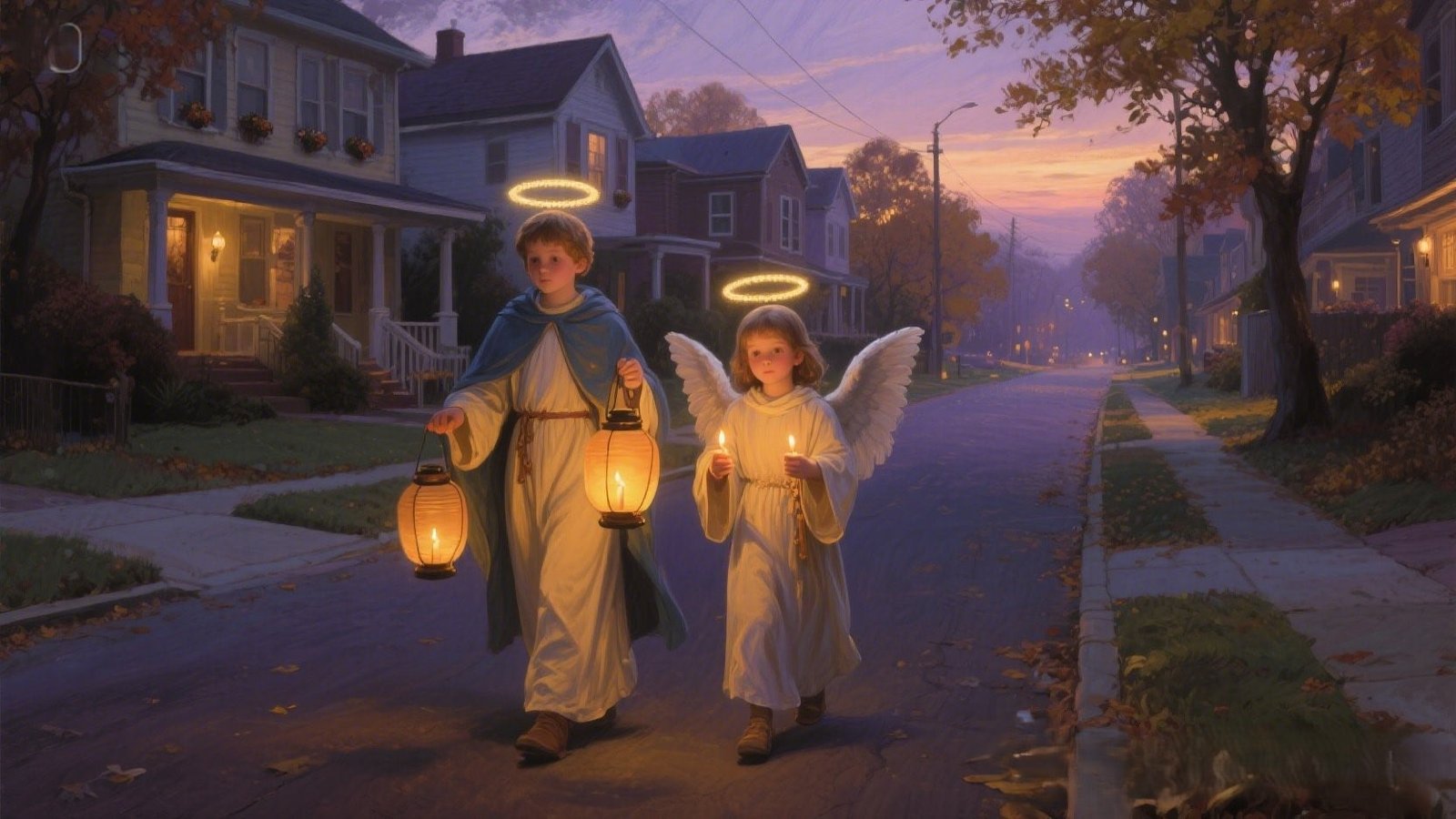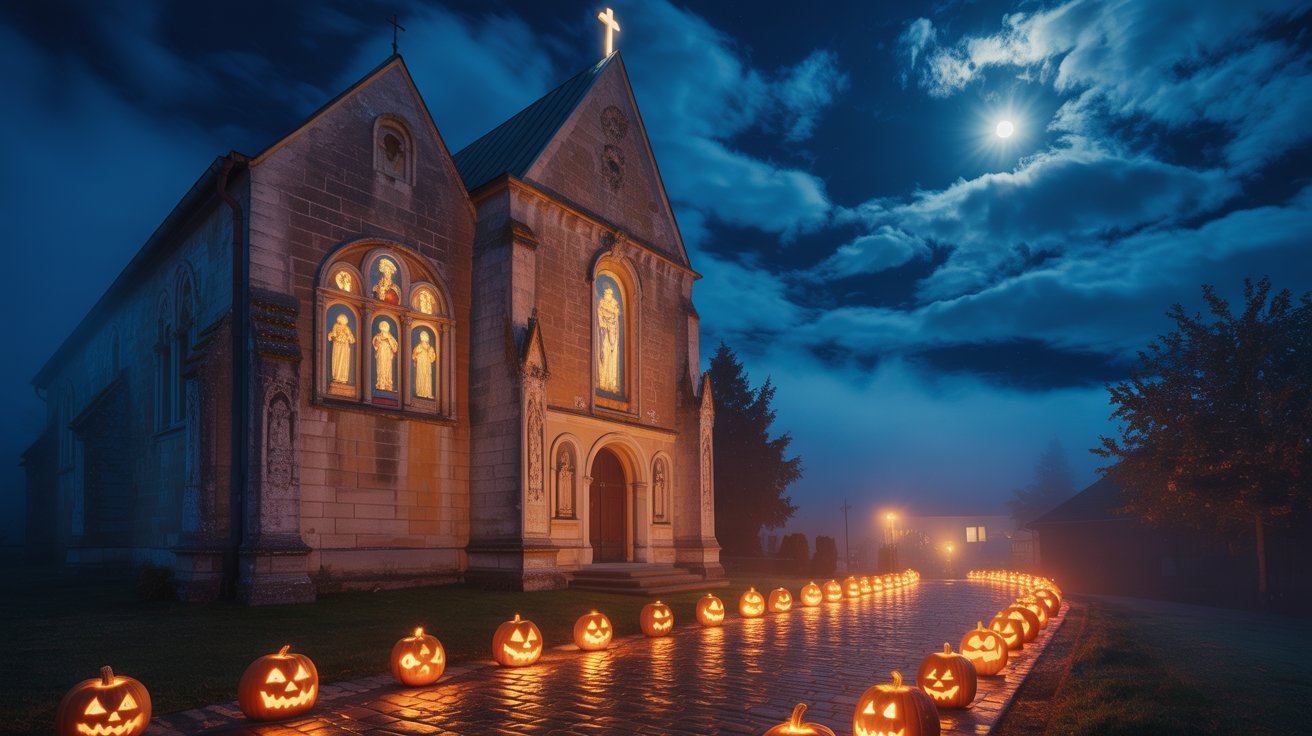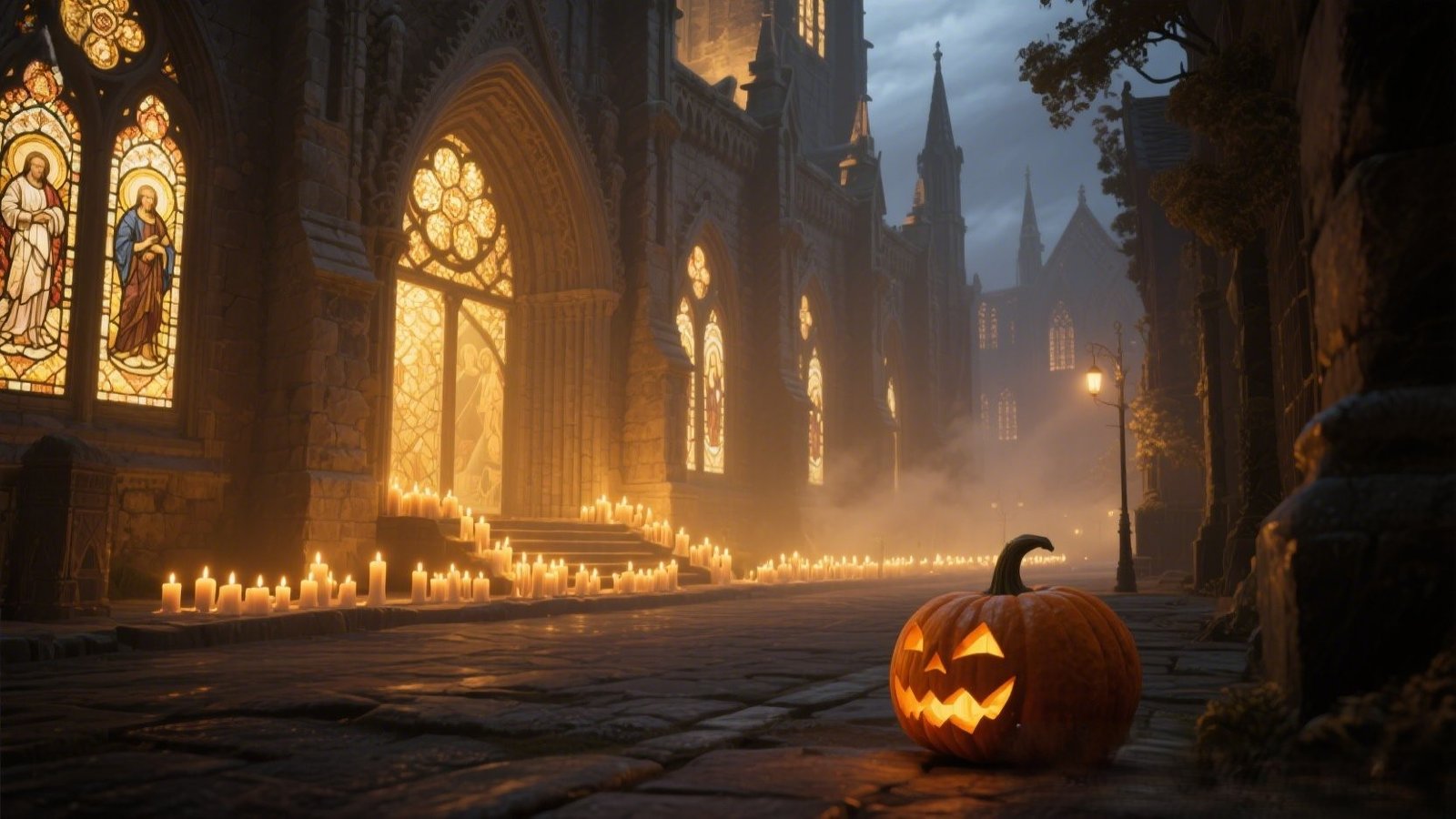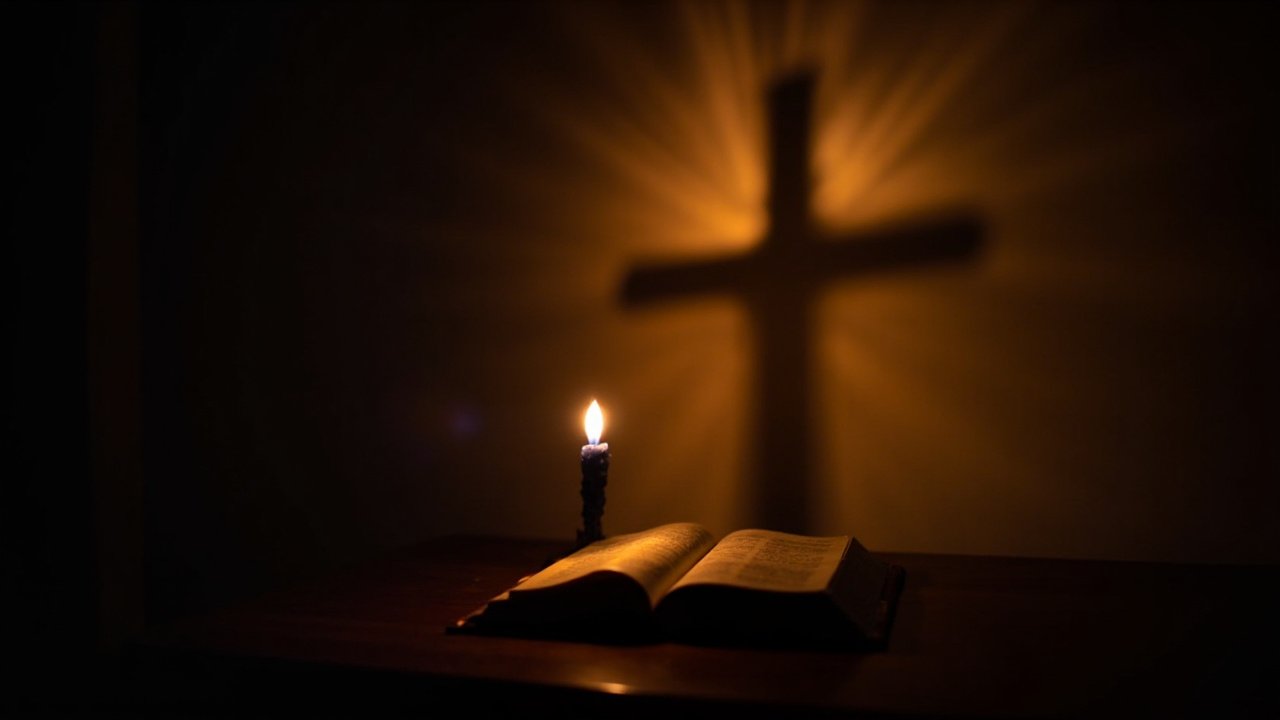
(Part 4 of the “Unmasking Halloween” Series)
Halloween is a rich tapestry of feelings—a mix of fond nostalgia for childhood trick-or-treating, a slight unease at its darker elements, and a strong urge to partake in a widespread cultural event. For Christians, this night often feels like an inner conflict between taking part in harmless merriment and protecting oneself from spiritual compromise. The essence of discipleship, however, isn’t about blind conformity or shrinking in fear. Rather, it calls for engaging with truth and love, redeeming what has been distorted. This piece charts a course to transform Halloween into a celebration of light, drawing from its Christian origins of All Hallows’ Eve and celebrating Christ’s triumph over darkness.
“Do not be overcome by evil, but overcome evil with good.” — Romans 12:21
The Origins and Evolution of Halloween Its Beginnings Halloween was originally All Hallows’ Eve, the vigil for All Saints’ Day, a Christian feast day honoring the victory of saints and the promise of resurrection. Early Christians used this occasion to mock death and evil, with strong faith in Christ’s triumph (1 Cor 15:54–57). It was a night of prayer, remembrance, and anticipation, with candles illuminating the path for the departed faithful and boldly declaring, “the light shines in the darkness, and the darkness has not overcome it” (John 1:5).
Its Transformation Today, Halloween has become a cultural powerhouse, propelled by consumerism and often imbued with unsettling themes. Costumes tend to celebrate gore or sensuality, decorations often flirt with occult symbols, and the media normalizes violence or spiritual dabbling. Even if much of the holiday remains in good fun, its underlying themes can obscure the line between good and evil, dulling the reverence for the sacred. Christians find themselves wrestling with their response, striving to maintain their witness and joy.
The Road to Redemption Redeeming Halloween doesn’t require overlooking its challenges or embracing them without scrutiny. It means identifying what is good, setting clear boundaries against what is harmful, and infusing the night with the light of Christ. Redemption acknowledges the presence of evil (Eph 5:11) but refuses to concede to it. Instead, it seeks to reclaim the night with truth, beauty, and love.
Three Faithful Approaches to Halloween Engagement Navigating Halloween as a Christian demands thoughtful intention. Here are three pathways, each rooted in Scripture and tradition, to guide decisions that resonate with your values and calling.
- Conscientious Avoidance For some, steering clear of Halloween fits best with honoring God and safeguarding their family’s spiritual growth. This decision isn’t driven by fear but by the desire to prioritize a countercultural testimony.
Doing It Gracefully:
Host an All Saints’ Eve Gathering: Bring your family together for a simple meal, illuminate candles to remember departed loved ones, and read passages like Wisdom 3:1–3 (“The souls of the righteous are in the hand of God”) or John 1:5. Sing hymns such as “For All the Saints” to commemorate the faithful’s triumph.
Communicate Your Choice Thoughtfully: Express your reasoning to others—perhaps a yearning to focus on Christ’s light—without casting judgment on those who participate. Exhibit humility and conviction.
Provide a Warm Alternative: If neighborhood kids visit, greet them with hot cocoa, a smile, and a kind word. Your hospitality can serve as a quiet testament.
Importance: Thoughtful avoidance teaches hearts to prioritize eternal truths over passing trends, offering an opportunity to instill discernment and bravery in children (James 4:7).
- Thoughtful Redemption For those opting to participate, redemption involves keeping the good—community, creativity, and joy—while rejecting what is harmful or contrary to faith.
Practical Guidelines:
Costumes: Encourage attire that stimulates imagination and virtue: saints, historical figures, or whimsical characters. Avoid anything occult, sexualized, or gruesome, as these can shape beliefs subtly (Phil 4:8).
Decorations: Showcase the beauty of autumn—pumpkins, leaves, and candles—while steering clear of grim or occult symbols. Ensure your home radiates warmth and hospitality.
Doorway Ministry: With each candy given, include a small card with a blessing (“You are loved by God. John 3:16”) or invite to your church’s All Saints’ service. Be genuine, not overbearing.
Conclude with Prayer: End the evening with a family prayer, like Compline or Psalm 27:1 (“The Lord is my light and my salvation; whom shall I fear?”).
Importance: Redemption turns a secular event into a chance for witness and joy, guiding children to critically engage with culture while letting their light shine (Matt 5:16).
- Gentle Witness Halloween’s neighborhood buzz offers a rare opportunity to interact with seldom-seen individuals. Use this chance to build relationships and gently extend Christ’s love.
Effective Methods:
Keep the Porch Light On: Welcome trick-or-treaters warmly, learn their names, and offer a kind thought or silent prayer. If someone expresses a need, offer to pray discreetly.
Join or Host a Community Event: If your church holds a Trunk-or-Treat or All Saints’ party, ensure it’s inviting, secure, and genuine—not a covert evangelism effort. Center it on beauty and hospitality.
Be a Good Neighbor: Utilize the night to meet neighbors, hear their stories, and display genuine care. Small acts of kindness sow seeds for the Gospel.
Importance: Gentle witnessing builds connections in a divided world. It answers Christ’s call to let your light shine before others (Matt 5:16).
Essential Spiritual Boundaries Regardless of your chosen path, certain boundaries are crucial to safeguard your soul and honor God:
Avoid Occult Practices: Scripture clearly warns against practices like Ouija boards, séances, or “harmless” rituals (Deut 18:10–12) as they invite spiritual harm and diminish God’s sovereignty.
Consider Media Choices: Horror films or shows that glorify violence or evil can desensitize the heart. Opt for content that uplifts or doesn’t erode compassion (Col 3:2).
Teach Discernment: Equip children to recognize wrongdoing and confidently step away, building lifelong spiritual resilience (1 Pet 5:8–9).
A Simple Family Liturgy for October 31 A 15-minute ritual can anchor your day in faith, whether you take part in Halloween or not:
Light a Candle and Place a Cross: Declare, “Jesus Christ is the Light of the world” (John 8:12).
Read Scripture: Proclaim 1 Corinthians 15:54–57 (“Death is swallowed up in victory”).
Remember the Faithful: Recite the names of saints (such as St. Francis or St. Teresa) and departed loved ones, expressing gratitude for their testimonies.
Pray for Protection: Ask, “Saints of God, pray for us,” and intercede for your family and community.
Bless One Another: Mark a cross on each family member’s forehead, saying, “Walk in the light of Christ.”
This liturgy roots the night in hope and victory, turning attention to Christ’s triumph over death.
Counteracting Common Pressures Halloween often presents cultural myths that can sway even the devoted. Here’s how to respond:
“It’s just make-believe.” Imagination still impacts the heart. Costumes, games, and media guide the heart toward virtue or vice. Choose what aligns with “whatever is true, whatever is honorable” (Phil 4:8).
“My kids will miss out.” By prioritizing faith-based alternatives, children gain courage, clarity, and a deeper sense of identity in Christ—far more meaningful than candy or trends.
“Avoidance is unloving.” Setting boundaries is a form of love, protecting your family and modeling discernment. Engaging thoughtfully with neighbors can also display Christ’s love without compromise.
A Call to Churches and Ministries Churches can spearhead the redemption of Halloween by offering meaningful alternatives and clear teachings:
Host a Vigil of Light on October 31: Organize a service of adoration, confession, and candle-lighting for the departed. Incorporate prayers for the neighborhood and readings like Colossians 2:15.
Celebrate All Saints’ Day on November 1: Plan a festival featuring saint testimonies, themed costumes, and a city-dedication prayer. Make it joyful and inviting.
Educate Your Community: Share a concise bulletin insert or social media post about Halloween’s Christian roots, practical boundaries, and faithful engagement methods.
Scriptures to Guide the Night These verses ground your approach in divine truth:
John 1:5: “The light shines in the darkness, and the darkness has not overcome it.”
Colossians 2:15: Christ “disarmed the rulers and authorities and put them to open shame.”
Ephesians 5:11: “Take no part in the unfruitful works of darkness, but instead expose them.”
James 4:7: “Resist the devil, and he will flee from you.”
1 Peter 5:8–9: “Be sober-minded; be watchful. Your adversary the devil prowls around like a roaring lion.”
Pastoral FAQ Quick Responses
Is trick-or-treating sinful? It isn’t inherently sinful, but context is important. Keep costumes and activities innocent and charitable.
Can children dress as saints or heroes? Certainly—use this as an opportunity to share their inspiring stories.
Are horror movies acceptable? Avoid content that normalizes evil or diminishes empathy. Opt for uplifting media.
Is handing out Scripture pushy? Not if done kindly. A small card with a scripture verse and details of your church’s All Saints’ service can be a gentle offering.
Conclusion: Lead with Light Halloween need not be a night of fear or conformity. Whether you choose avoidance, redemption, or gentle witness, let the principles of truth, love, and courage guide you. Christ has already conquered darkness (Col 2:15). You are free to shine His light boldly, transforming October 31 into a celebration of hope and victory.
“Light has already won.”



